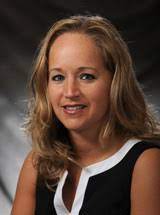
The Function of APs in Effective Biomarker Testing
Last Updated: Friday, January 20, 2023
Beth Sandy, MSN, CRNP, of the University of Pennsylvania Abramson Cancer Center, and Eve Segal, PharmD, BCOP, of the Seattle Cancer Care Alliance/University of Washington, discuss biomarker testing options for patients with non-squamous, non-small cell lung cancer (NSCLC), including liquid testing vs. tissue testing. They also discuss the importance of retesting and equitable care across patients.
Meet the faculty

Beth Sandy
MSN, CRNP
University of Pennsylvania Abramson Cancer Center
Ms. Sandy is a nurse practitioner specializing in thoracic malignancies. She serves on various editorial boards and has published in several peer-reviewed medical journals. She speaks nationally and internationally on the topics of lung cancer and the supportive care needs of patients with lung cancer.

Eve Segal
PharmD, BCOP
Seattle Cancer Care Alliance/University of Washington
Dr. Segal is a clinical pharmacy specialist whose primary responsibilities include collaborating with the medical oncology team in the care of patients with a variety of solid tumors. She has authored and coauthored several publications in various peer-reviewed medical journals.
